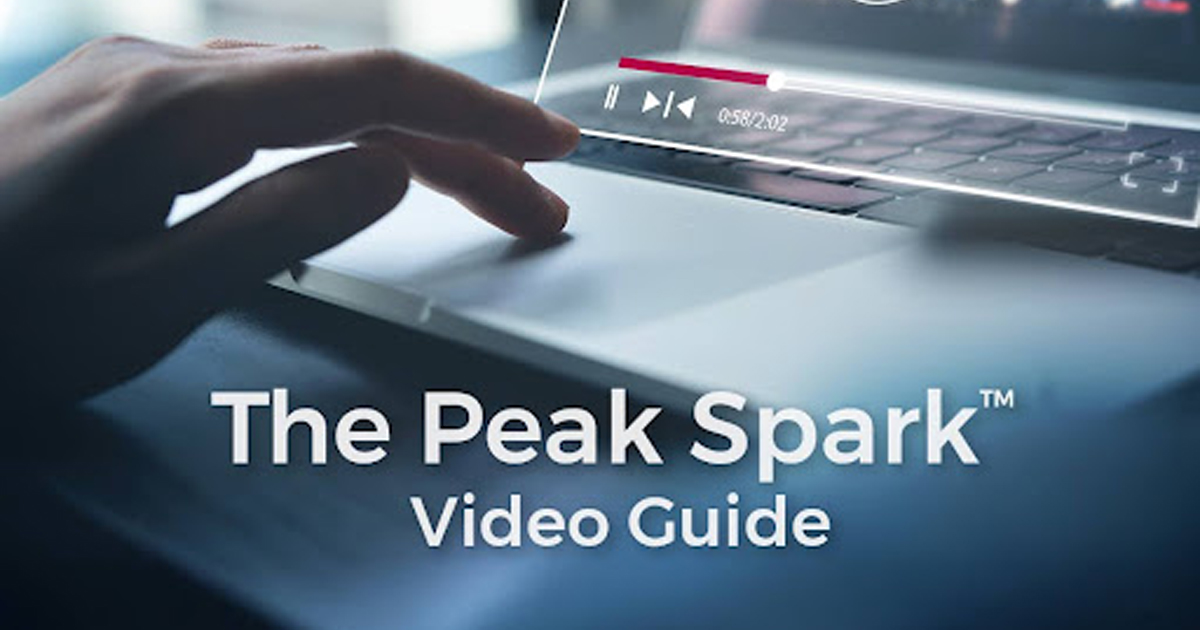The Peak Spark™ Video Guide

How to Grab Attention in 3 Seconds and Turn Viewers into Buyers
If you're creating your own marketing videos to promote a high-ticket product—whether you're in B2B or B2C manufacturing—you’re competing for attention in a noisy digital world.
Even the best products won’t gain traction if your video doesn’t grab attention immediately.
At Peak 10 Marketing, we call this your Peak Spark™—and it’s the most important part of any content you produce.
What Is a Peak Spark™?
A Peak Spark™ is the first 3–5 seconds of your video—the moment where a viewer decides:
“I want to keep watching,” or “I’m out.”
It’s not the place for your logo. Not the time for a company intro. It’s the trigger that pulls your audience in, gets them emotionally invested, and earns you the right to tell the rest of the story.
Done well, your Peak Spark™ will:
- Disrupt the viewer’s pattern
- Create immediate curiosity
- Imply clear value or relevance
- Spark enough energy to keep them watching
Why It Matters for Manufacturers
Whether you’re selling:
CNC and Machining Equipment
Heat Treating and Kiln Systems
Metal Fabrication Equipment
Injection Molding and Plastic Forming Systems
Industrial Automation and Robotics
Material Handling and Conveyance Systems
Dust Collection and Air Filtration Systems
Powder Coating and Finishing Systems
Commercial HVAC and Ventilation Systems
Water Treatment and Filtration Equipment
Packaging and Labeling Machinery
Industrial 3D Printing Systems
Heavy Equipment and Compact Machinery
Commercial Agricultural Equipment
Cold Storage and Refrigeration Systems
Forklifts and Warehouse Equipment
Electrical Supply Equipment
Industrial Lighting and Electrical Infrastructure
High-Capacity Air Compressors and Power Systems
Modular Buildings and Fabricated Structures
…your videos are often your first impression.
A smart Peak Spark™ ensures your message doesn’t get lost—and gets your ideal buyer into the story fast.

5 Steps to Build a Great Peak Spark™ in Your Video Content
Each of the following steps aligns with the P.E.A.K. Performance Principle—Pattern Disruption, Emotional Trigger, Audience Relevance, and Kinetic Energy.
Step 1: Lead with a Problem, Not Your Product
Start with a relatable frustration, question, or myth your customer deals with.
Examples:
- “Still sweeping up dust at the end of every shift?.”
- “Your parts might look great—but are they really bonded to last?”
- “Sick of soggy crust or burnt edges on your pizza?”
Why this works: You're entering their world, not yours. This disrupts their expectations and instantly connects to something they care about.
Step 2: Show the Outcome or Shift
In the next 1–2 seconds, hint at what’s possible. Move quickly from problem to promise.
Examples:
- “Our automated system cut cleanup time by 80%—and saved a full man-hour per day.”
- “This dual-zone oven eliminates cold spots and boosts finish durability by 3x.”
- “This stone deck hits 900°F in 7 minutes—and cooks perfect pizza in 90 seconds flat.”
Why this works: It sets the hook without giving away the whole story. It makes your viewer want the full answer.
Step 3: Use Movement, Voice, or Visual Disruption
Avoid static shots, bland voiceovers, or boring pans. Grab attention with contrast, sound, or motion.
Try:
- A dramatic before/after shot
- A loud sound, zoom, or unexpected close-up
- Showing the product doing something visually surprising
Why this works: The brain notices change. Use kinetic energy to wake up the viewer’s senses and break the scroll.
Step 4: Keep It Short—The Spark Should Be 3–5 Seconds
Trim ruthlessly. If your first sentence is “Hi, I’m Mike with XYZ Company…”—you’ve already lost them.
Instead, lead with the hook. Introduce yourself after you’ve earned attention.
Pro tip: Film your Peak Spark™ first, then build the rest of your video around it.
Step 5: Match the Spark to the Platform
Different platforms, different behaviors. Adapt your Spark accordingly.
- YouTube: Title, thumbnail, and first 5 seconds carry the load
- Facebook/Instagram: First 2 lines + video preview frame
- LinkedIn: Opening line + visual + relevance to professional role
- Email: Subject line + preview text + first 10 seconds of video
Key principle: If you don’t hook them in seconds, they’re gone.

Examples of Peak Spark™ in Action
B2C Examples (High-Ticket Consumer Products)
1. Sauna (Home Wellness)
Opening Line:
“Therapy, stress relief, better sleep—all in your own basement. This sauna changed our lives.”
Visual: Wide shot of the sauna setup, steam rising, family entering or relaxing quietly
2. Wood-Fired Pizza Oven (Outdoor Living)
Opening Line:
“It hits 900°F in 12 minutes—and makes pizza that crushes our favorite restaurant.”
Visual: Close-up of flames, fast-timed dough going in, then cutting to a melted, bubbly finished pizza
3. Cold Plunge (Home Recovery)
Opening Line:
“I bought this for recovery—but it completely changed my mood and energy levels.”
Visual: Jump cut of customer stepping into the plunge, followed by their face reacting, then overlay: “5 minutes, full reset”
B2B Examples (Industrial & Manufacturing Equipment)
1. CNC Machine (Production Speed)
Opening Line:
“Can you really machine 4x faster without sacrificing precision? This tool did exactly that.”
Visual: Time-lapse of material being shaped, followed by final part inspection on screen
2. Heat Treat Oven (Efficiency Comparison)
Opening Line:
“Most kilns take hours to ramp. Ours hit full temp in under 30 minutes—without spikes.”
Visual: Real-time heat gauge climbing vs. competitor, with animated overlay or side-by-side readout
3. Dust Collection System (Workplace Safety)
Opening Line:
“You can’t see it—but your air system might be costing you more than downtime.”
Visual: Dust particles in light beam, worker coughing, then cut to clean airflow and sensor dashboard
Common Mistakes to Avoid
- Starting with your company name or logo
- Taking too long to “get to the point”
- Using technical jargon that confuses viewers
- Saving the benefit until the end
- Relying solely on a talking head without visuals or motion
Pro Tips for Better Results
- Film your Spark first—then script around it
- Write 3–5 alternate versions of your opening line before choosing one
- Use your best demo footage early
- Add captions for sound-off viewing (especially on mobile)
Bonus: 5 Spark Types to Try
Emotional Spark: Taps into fear, frustration, or hope
Example: “This one machine saved our shop from shutting down.”
Contrarian Spark: Flips expectations
Example: “Why we stopped maxing out feed rates on our CNC—and you might too.”
Authority Spark: Leverages data or credibility
Example: “97% of downtime comes from this one overlooked process.”
Aspirational Spark: Speaks to identity or desire
Example: “We installed this sauna in our basement—and now we never leave.”
Demonstration Spark: Shows product performance in action
Example: “Watch this cool to touch kiln go from cold to 2,000°F in under 8 minutes.”

Final Word: Spark First. Sell Later.
In video, the message that gets action, is the one that grabs interest.
A strong Peak Spark™ isn’t about selling harder—it’s about earning the viewer’s attention in a world that scrolls fast. Once you’ve got it, your product story, value, and offer have a chance to land.
If you need help refining your Spark, rewriting your intro, or producing high-performance content that drives sales—we’re here to help.
Peak 10 Marketing: We engineer attention. You close the deal.
Related Resources
Learn More About the Future of Digital Marketing
The future belongs to those who build it. Discover how to engineer marketing systems that perform as precisely as your production line.




